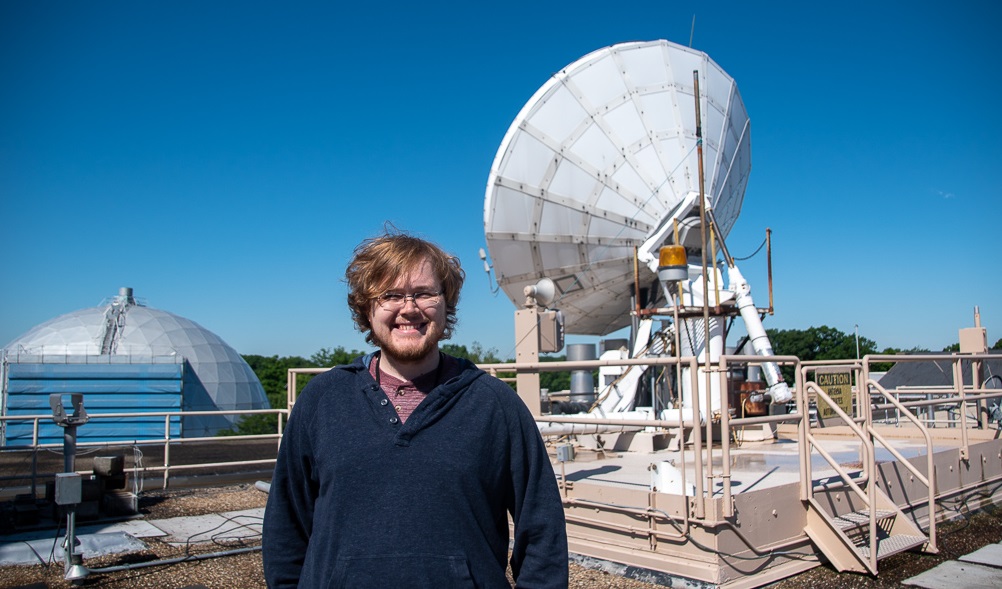Engineering Ph.D. student hired by NASA Glenn Research Center
Mike Gasper, a fourth-year doctoral student in electrical engineering at The University of Akron (UA), was recently hired as a full-time spectrum analyst at the NASA Glenn Research Center (GRC) in Cleveland, Ohio, where he performs interference analysis for the radio spectrum.
“Think of the spectrum as a highway of information with different lanes,” he says. “Only so many cars (information) can fit on the highway at a time, and you don’t want two cars driving head-on at each other. I try to make sure that doesn’t happen. I analyze how signals propagate through the air and make sure those signals can get where they need to go without being interfered with by other signals.”
Gasper was hired after completing his second summer rotation in the Space Communications and Navigations Internship Project (SIP) at GRC, where he built transistors and worked on creating a “graphene frequency multiplier” that can withstand the harsh environment on Venus.

Mike Gasper, a University of Akron PhD student, outside his job at the NASA Glenn Research Center in Cleveland
“A frequency multiplier is a series of switches that, when flipped properly, makes a clock tic faster,” he says. “Traditional clocks, or oscillators, degrade in the extreme atmosphere of Venus. Thanks to the nonlinear properties of graphene, a graphene frequency multiplier can allow for higher clock frequencies to enable communication in these environments.”
Gasper presented his work at the 2019 SIP Presentation and Awards Ceremony in front of personnel from NASA’s Headquarters in Washington, D.C., and others from GRC, academia and industry on Aug. 7.
“A lot of my research at the University ties into my research that is going on at NASA,” says Gasper, who hopes to complete his dissertation on the fabrication and characterization of graphene devices, and graduate, within the next six months. “The methods and tools I use to make devices for NASA can also be used for the devices I am making for my dissertation.”
Gasper, who also earned his bachelor’s and master’s degrees in electrical engineering at UA — completing two internships at GRC as an undergraduate — credits the University for giving him the knowledge and real-world experience needed for his new position.
“UA has helped prepare me for my current position by giving me a deep understanding of radio-frequency engineering,” he says. “Also, being able to put theory to the test in the hands-on labs, and see it in a real-world scenario, helped solidify the concepts in my mind.”
Tim Gallagher, SIP coordinator at GRC, says he has been “very impressed by the variety of engineering majors” he has met at recruiting events for SIP, and that Gasper’s experience highlights the collaborative relationship between GRC and UA.
“Mike took advantage of the unique opportunity he was presented with to collaborate with both his mentors back at school and his mentors here at NASA throughout his internships,” Gallagher says. “He was able to use the analytical skills he learned at school and apply that knowledge in a real-world lab setting, allowing him to take the experience he gained at NASA back to school to complete his Ph.D. This created a relationship that was mutually beneficial to both NASA GRC and UA.”
Learn more about The University of Akron's electrical engineering program.
